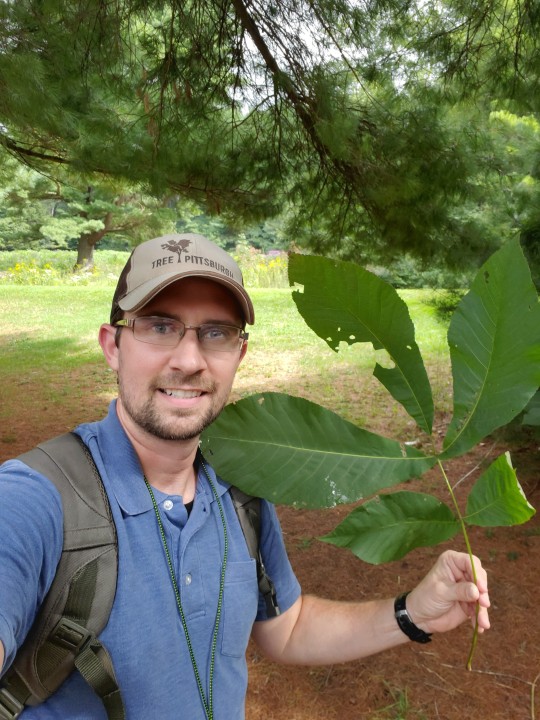Joe Stavish doesn’t need any reflection time to summarize the impact of the COVID-19 pandemic on his work. “The new challenge to me as an outdoor educator is working with students who are watching a screen.” The Associate Director for Community Education at Tree Pittsburgh laments months spent planning and presenting programs in which students never have the opportunity to get their hands dirty. “If you’re limited to showing pictures,” he explains, “the wow factor just isn’t there.”

Tree Pittsburgh is a 15-year-old non-profit organization dedicated to the restoration and protection of our region’s urban forest through tree planting and care, education, advocacy, and land conservation. Joe’s role, in the eight years he’s worked for Tree Pittsburgh, is to make sure the organization’s contact with communities it serves are as broad as possible. He kids about “cradle-to-the-grave” points of contact before listing near parallel audience segments, K-12 school classes, scout groups, youth groups, university students, neighborhood groups, adult classes, and garden clubs.
Some of the presentations he is involved with are part of formal programs, such as One Tree Per Child, a school-focused tree-planting initiative, or Explorer’s Guide, a collaborative effort with Pittsburgh’s Park Rangers for 4th and 5th grades that is scheduled to soon expand beyond its initial test audience in the City’s Northside neighborhoods. Other programs can currently be described as situational. “Teachers have been eager to have any type of virtual program we want to present.” Joe concedes in recognition of the ongoing and widespread problems with remote learning.
Although Joe is concerned about the limits of screen learning, I found the videos he directed me to on an Explorer’s Guide website to be very well done. Since 2018 Tree Pittsburgh has been headquartered in a riverside campus in Lawrenceville spacious enough to include what is termed a Heritage Tree Nursery. Much of a short video titled, The Life Cycle of a Tree, was shot in the nursery, a facility at the forefront of urban forestry. I never cried “Wow” while I watched the segment, but I learned a lot.
Patrick McShea works in the Education and Visitor Experience department of Carnegie Museum of Natural History. Museum employees are encouraged to blog about their unique experiences and knowledge gained from working at the museum.
Related Content
Ask a Scientist: How do you find rare plants?
